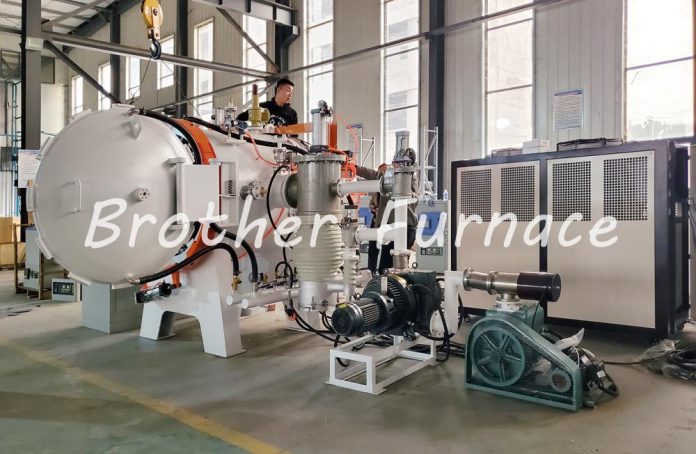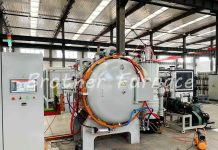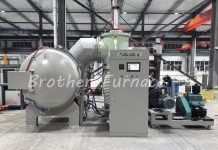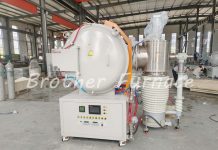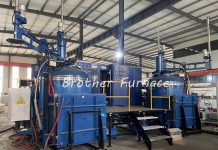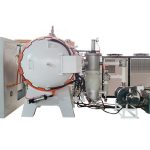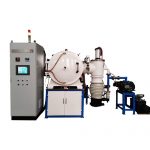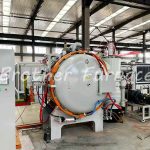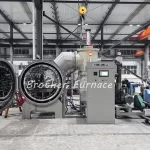Quenching, annealing, normalizing, and tempering are four common heat treatment processes. Today, we will give you a detailed introduction to what quenching, annealing, normalizing, and tempering are, as well as their purposes and applications.
What is quenching?
Quenching is a metallurgical processing technique used to improve the hardness and wear resistance of metal materials. It involves heating the material to a certain temperature and then cooling it at a rate greater than the critical cooling rate to increase the material’s hardness.
The purpose of quenching
- To improve the mechanical performance of metal materials or components. For example, increasing the hardness and wear resistance of tools, bearings, etc., increasing the elastic limit of springs, improving the comprehensive mechanical performance of shaft components, etc.
- Improving the material performance or chemical performance of certain special steels. For example, improving the corrosion resistance of stainless steel, increasing the permanent magnetism of magnetic steel, etc.
Vacuum quenching is mainly divided into air quenching and oil quenching:
What is tempering?
Tempering heats the quenched workpiece to the proper temperature, holds it for a number of hours, and then cools it slowly or rapidly. It is generally used to reduce or eliminate the internal stresses in the quenched workpiece, or to reduce its hardness and strength to improve its ductility or toughness. After quenching, the workpiece should be tempered in time, through the quenching and tempering together, in order to obtain the required mechanical properties.
The purpose of tempering
- Reduce internal stress and reduce brittleness, quenched parts have a lot of stress, and brittleness, such as the absence of timely tempering will often produce deformation or even cracking.
- Adjust the mechanical properties of the workpiece, the workpiece quenched, high hardness, and brittleness, in order to meet the different performance requirements of various workpieces, can be adjusted by tempering, hardness, strength, plasticity, and toughness.
- Stabilize the size of the workpiece. Tempering can stabilize the metallurgical organization to ensure that no further deformation occurs during subsequent use.
- Improve the cutting properties of certain alloy steels.
Types of tempering
- Low-temperature tempering: 150-250 ℃, to maintain the high hardness and wear resistance of the quenched workpiece, and reduce the residual stress and brittleness of quenching. Mainly used in all kinds of high-carbon steel tools, edge tools, gauges, molds, rolling bearings, carburized and surface quenched parts, etc.
- Medium temperature tempering: 350-500℃, with high elasticity, certain plasticity, and hardness. Mainly used for springs, clockwork, forging dies, impact tools, etc.
- High-temperature tempering: 500-650 ℃ or more, with good overall mechanical properties. Widely used in a variety of more important stress structural parts, such as connecting rods, bolts, gears, shaft parts, etc.
What is normalizing?
Normalizing is the process of heating a material to a certain temperature and holding it for a period of time, then cooling it to room temperature. Its purpose is to remove internal stresses and enhance the material’s organization and properties.
Normalizing applications
- For low carbon steel, the normalized hardness is slightly higher than the annealed hardness, and the toughness is better, so it can be used as a pretreatment for cutting.
- For medium-carbon steel, instead of tempering (quenching + high-temperature tempering) as the final heat treatment, can also be used as a preparatory treatment before surface quenching with the induction heating method.
- For tool steel, bearing steel, carburized steel, etc., it can reduce or inhibit the formation of reticulated carbide, so as to obtain the good organization required for spheroidal annealing.
- Used for cast steel parts, can refine the cast state organization, and improve the cutting performance.
- For large forgings, it can be used as the final heat treatment, thus avoiding the larger cracking tendency during quenching.
- Used for ductile iron, so that the hardness, strength, and wear resistance is improved, such as for the manufacture of cars, tractors, diesel engines, crankshaft, connecting rods, and other important parts.
- Normalizing before spheroidizing and annealing of peri-eutectoidal steel can eliminate the reticulated secondary carburizing body to ensure that all carburizing bodies are spheroidized during spheroidizing and annealing.
Since the normalizing is cooling by air, so the ambient temperature, stacking, airflow, and workpiece size have an effect on the properties after normalizing.
What is annealing?
Annealing is the process of slowly cooling a heat-treated metal material to reduce its strength and hardness. Its purpose is to restore the toughness and plasticity of the material in order to improve its machinability.
The purpose of annealing
- To improve or eliminate various defects and residual stresses caused by steel in the casting, forging, rolling, and welding processes, and to prevent deformation and cracking of the workpiece.
- To soften the workpiece for cutting and processing.
- Refine the grain and improve enhance the mechanical properties of the workpiece.
- Prepare for the final heat treatment (quenching and tempering).
Types of annealing
- Complete annealing: used to refine low carbon steel by casting, forging, and welding after the mechanical properties of the poor coarse superheated organization. The workpiece will be heated to the ferrite all transformed into austenite temperature above 30 ~ 50 ℃, holding time, and then slowly cooled with the furnace, in the cooling process of austenite transformation again, you can make the steel tissue thinning.
- Spheroidal annealing: used to reduce the high hardness of tool steel and bearing steel after forging. The workpiece will be heated to the steel began to form austenite temperature above 20 ~ 40 ℃, holding after slow cooling, in the cooling process of pearlite in the lamellar carburized body into spherical, thus reducing the hardness.
- Isothermal annealing: used to reduce the high hardness of certain alloy structural steel with high nickel and chromium content for the cutting process. Generally cooled at a faster rate to the most unstable temperature of austenite, holding appropriate time, the transformation of austenite into taustenite or sowthite, the hardness can be reduced.
- Recrystallization annealing: used to eliminate metal wire, sheet in the cold drawing, cold rolling process of hardening phenomenon (hardness increases, plasticity decreases). The heating temperature is generally 50 ~ 150 ℃ below the temperature at which steel begins to form austenite, only then can eliminate the process-hardening effect to soften the metal.
- Diffusion annealing: used to homogenize the chemical composition of alloy castings to improve their performance. The method is to heat the casting to as high a temperature as possible without melting, and a long period of insulation, to be slowly cooled after the diffusion of various elements in the alloy tends to be uniformly distributed.
- Stress relief annealing: used to eliminate the internal stress of steel castings and weldments. For steel products heated to begin to form austenite temperature below 100 ~ 200 ℃, holding after cooling in the air, you can eliminate internal stress.
Follow us on Facebook

